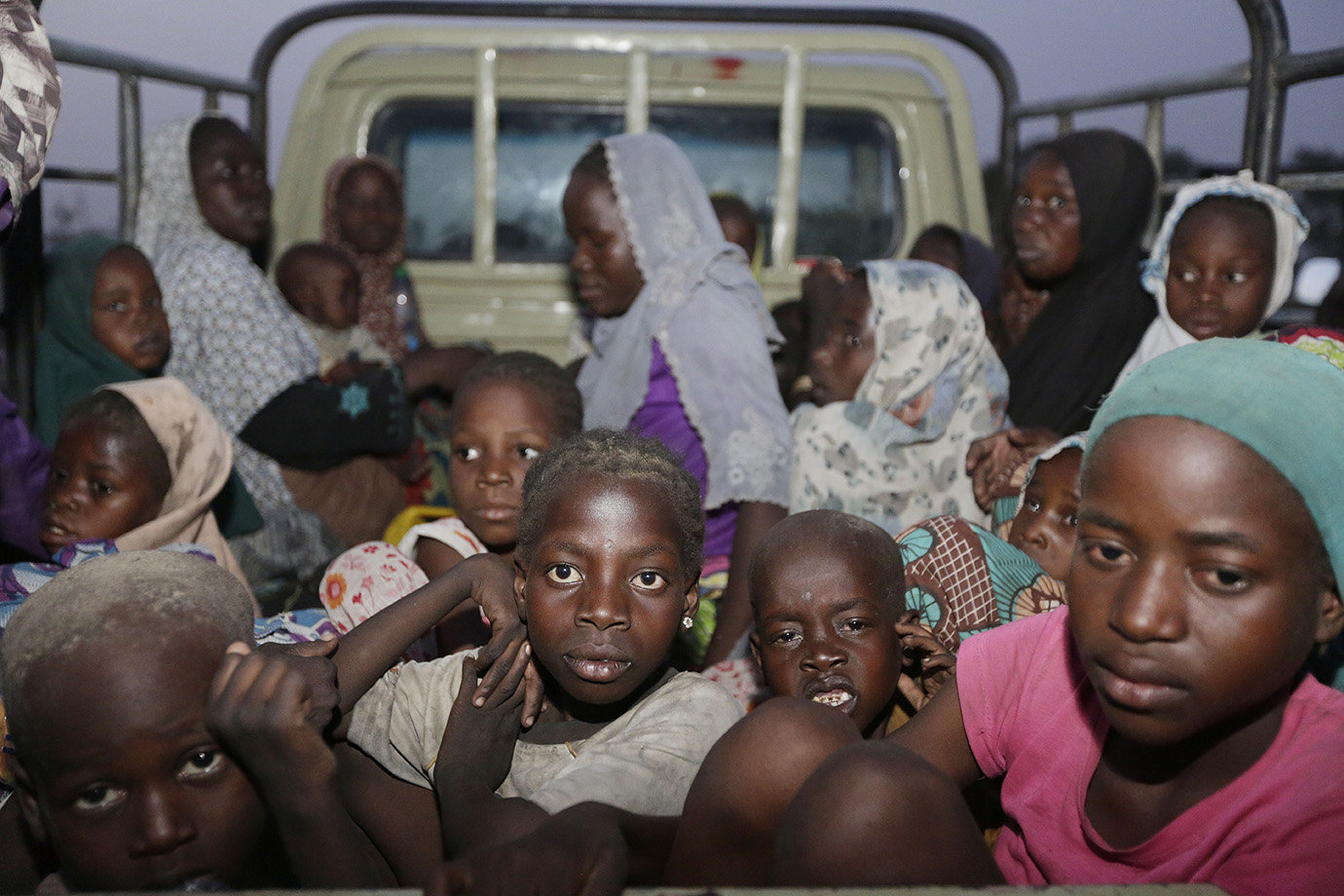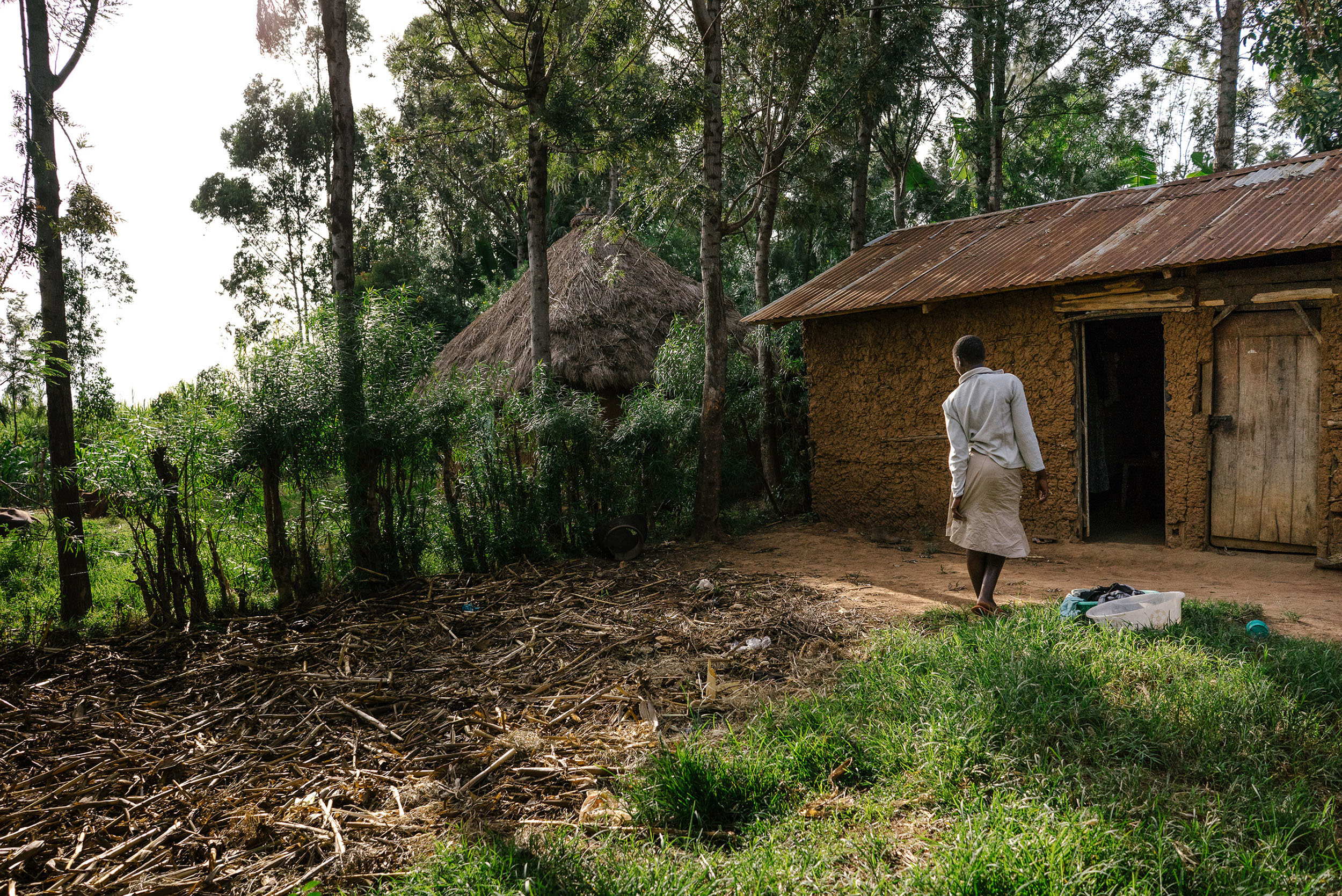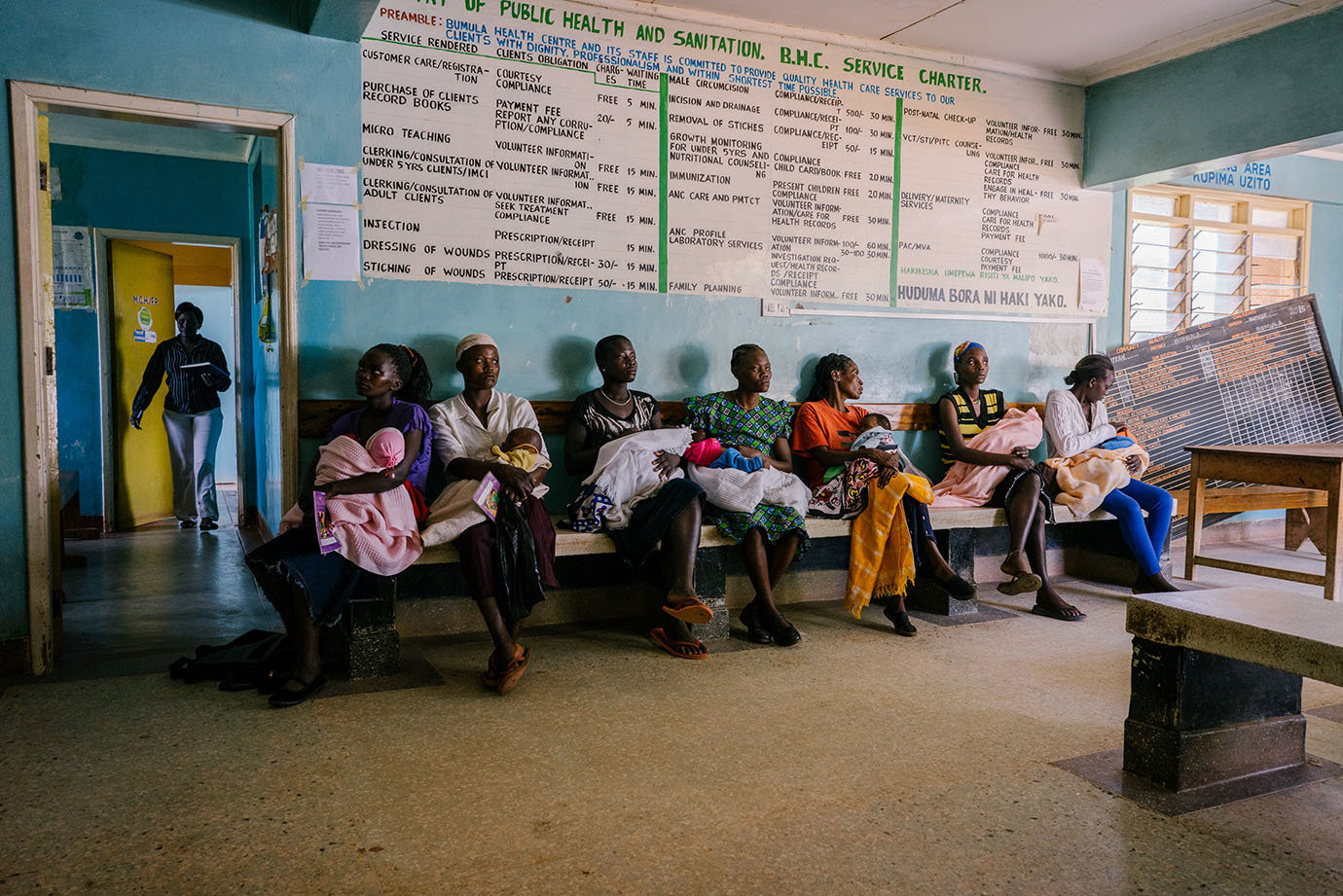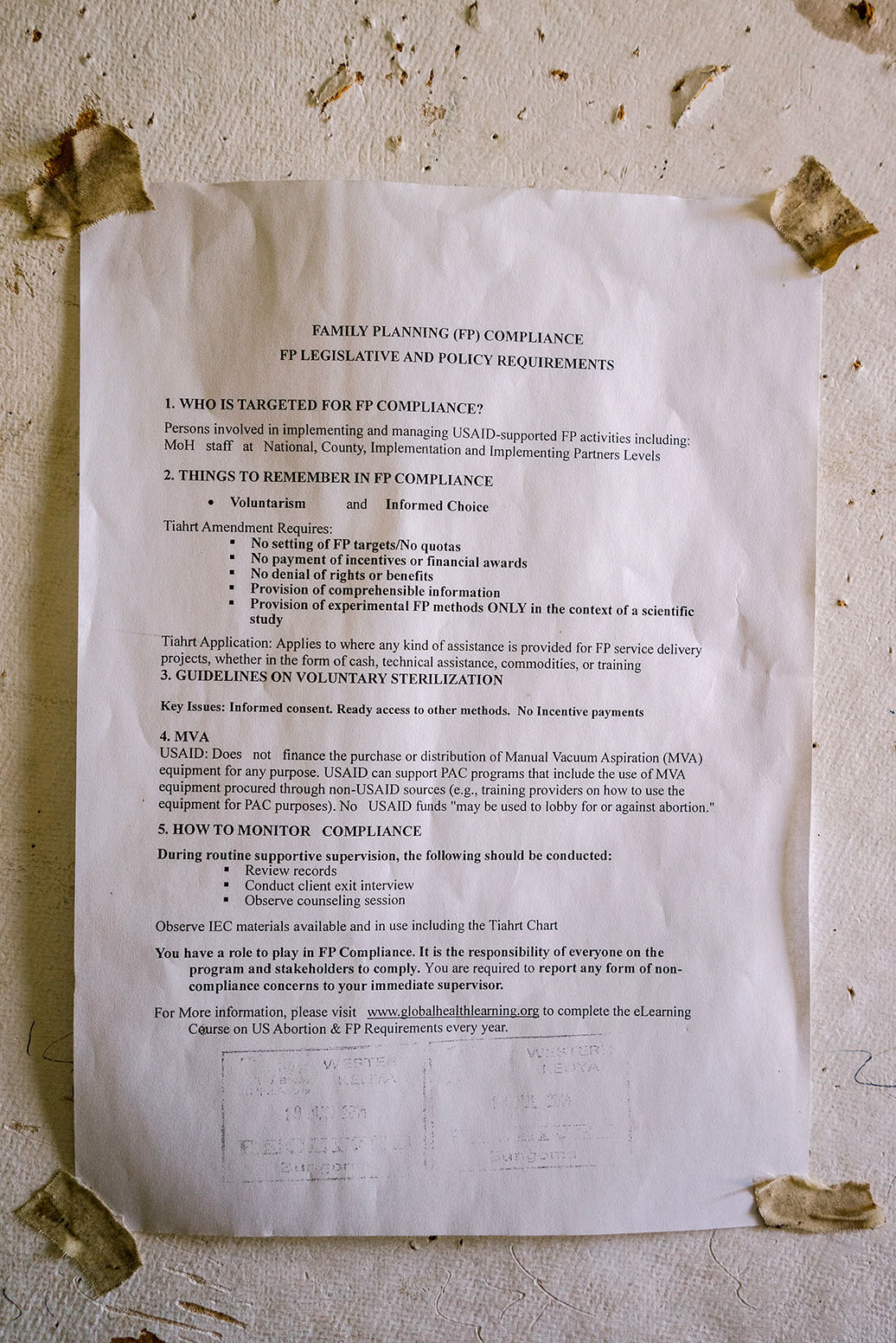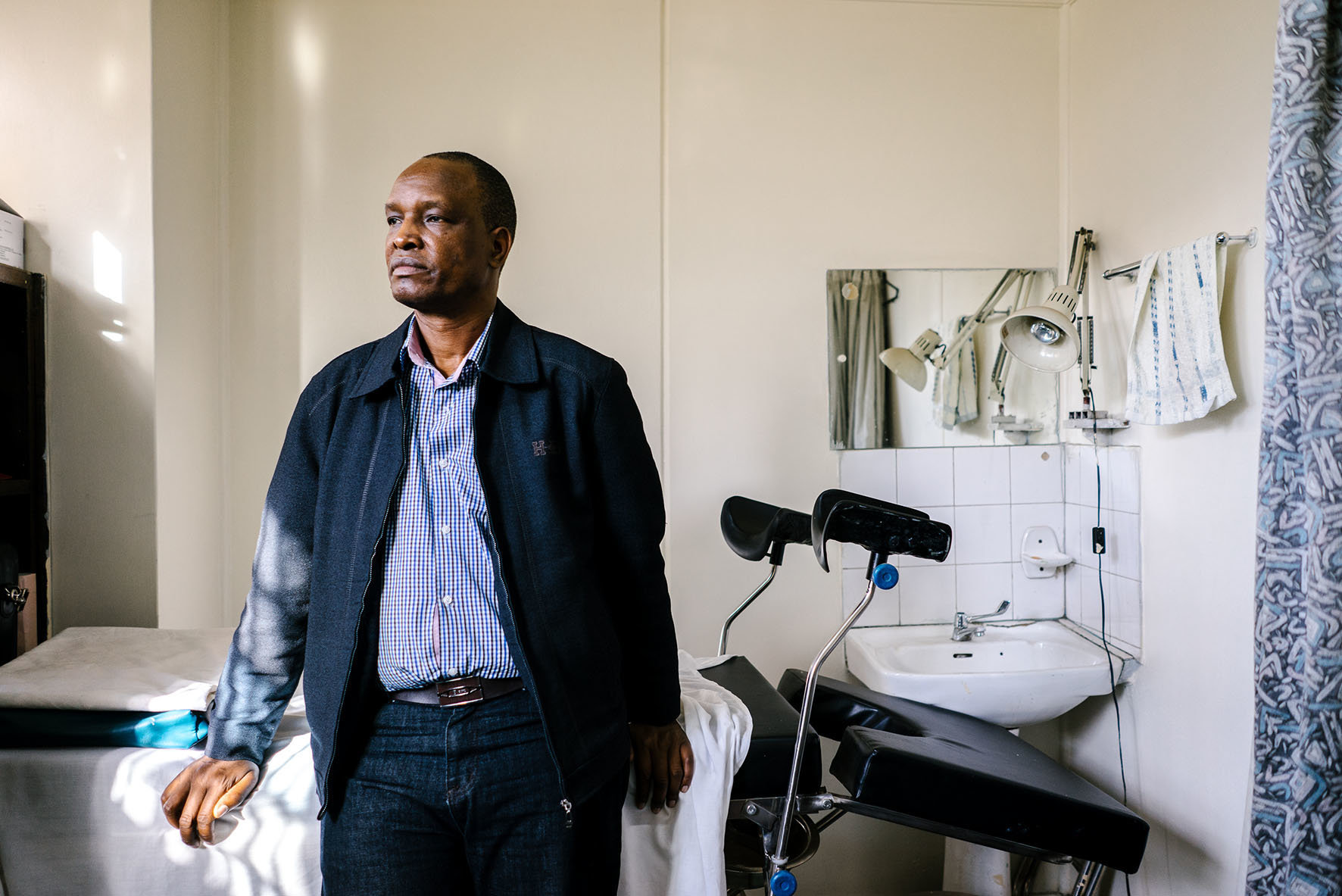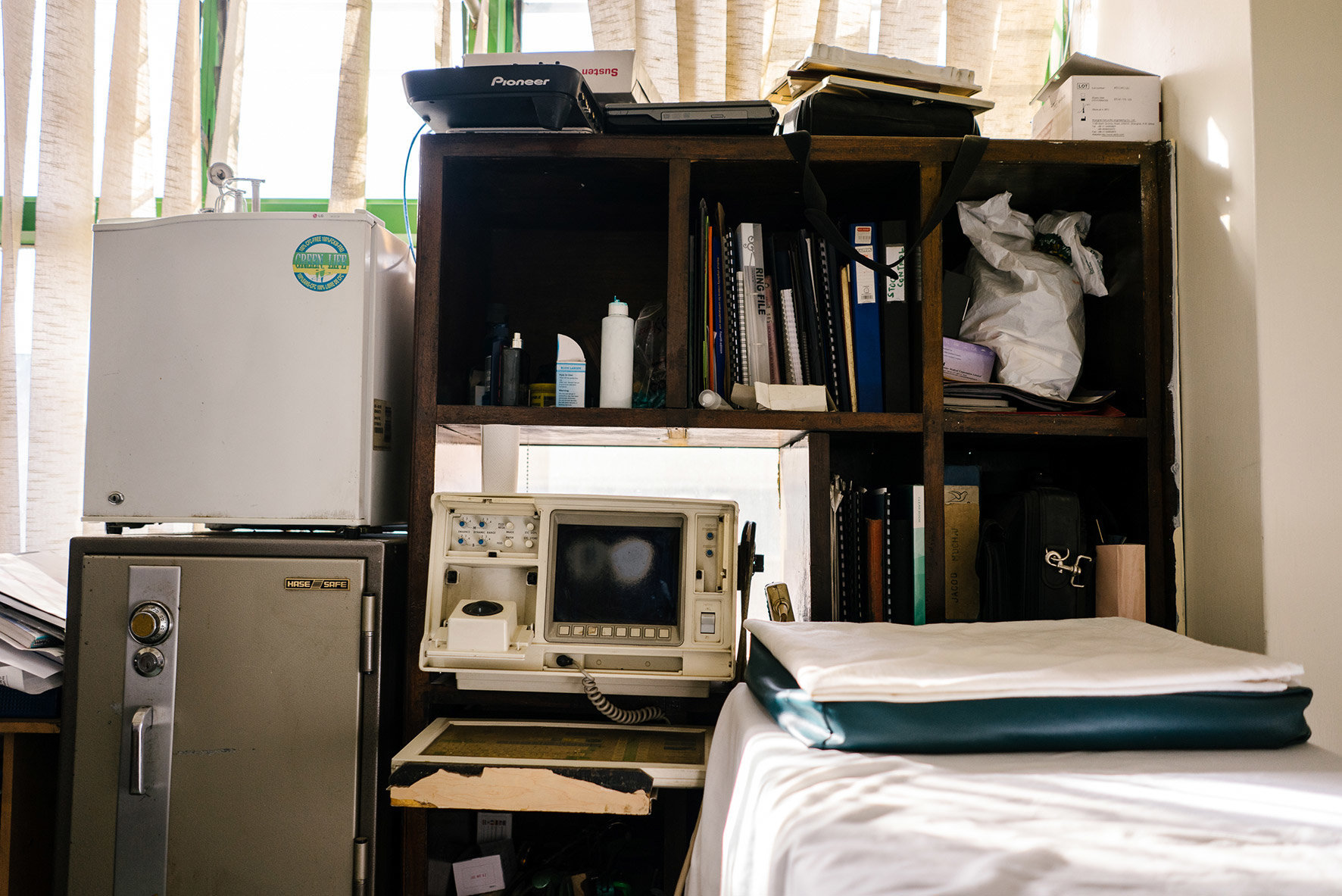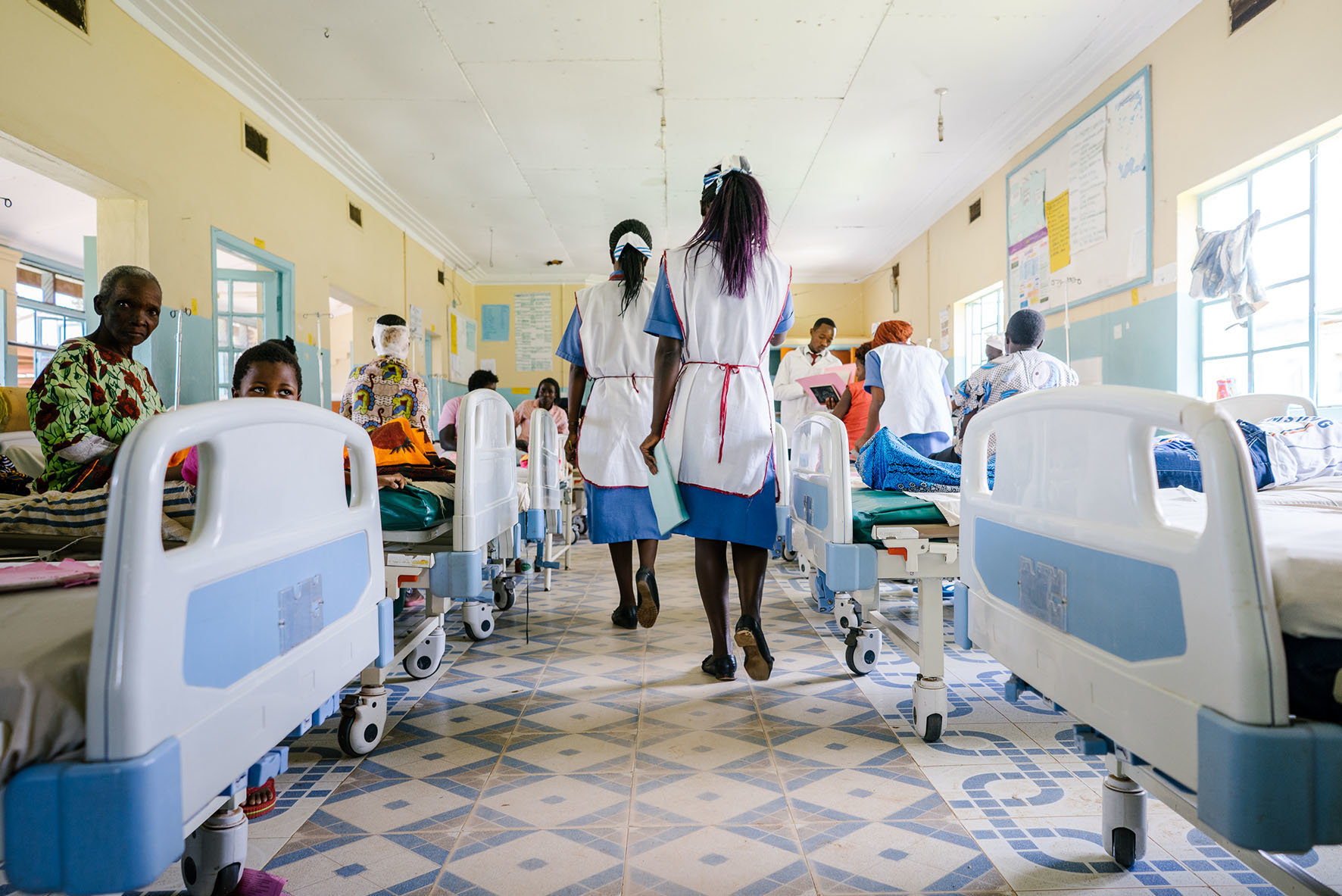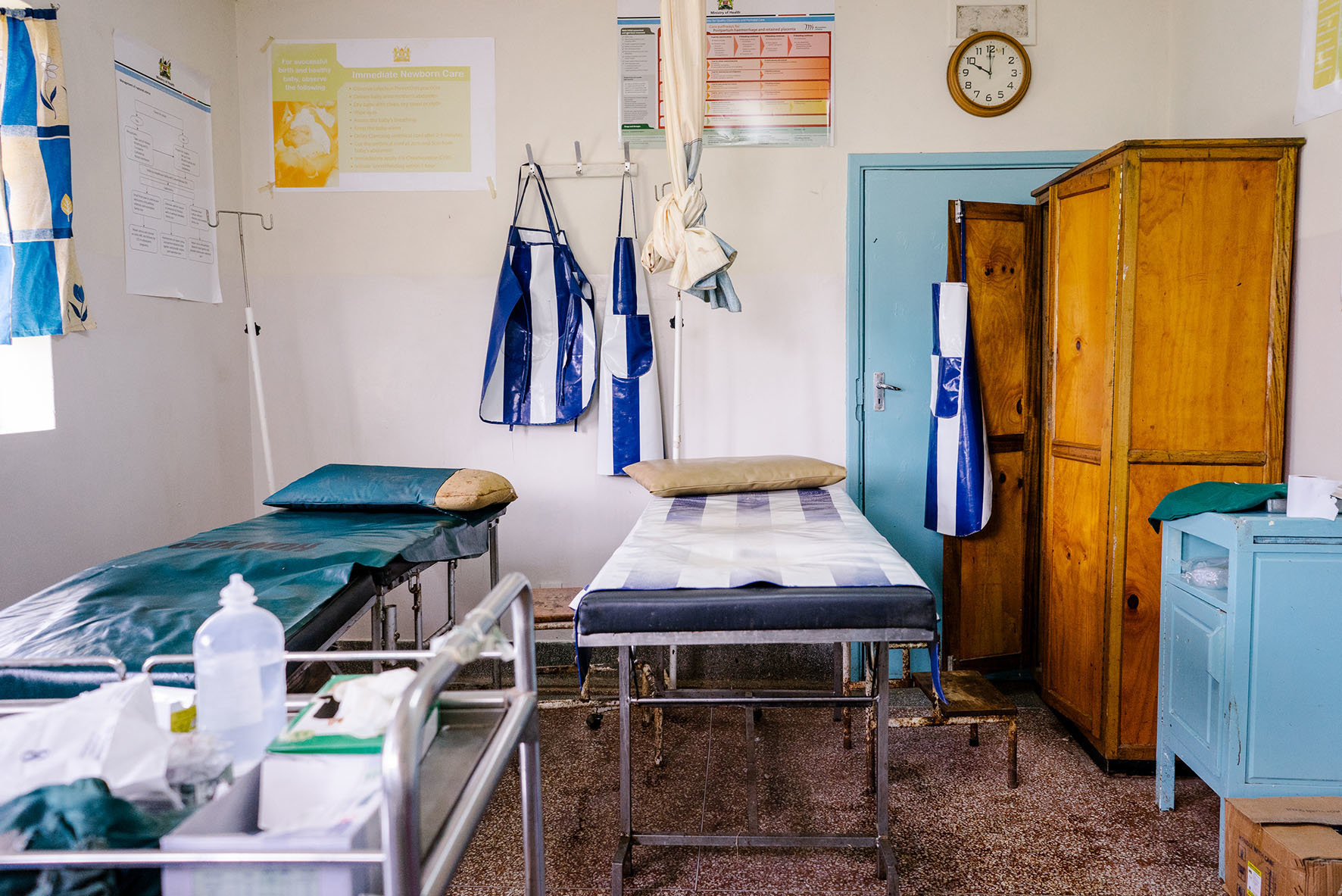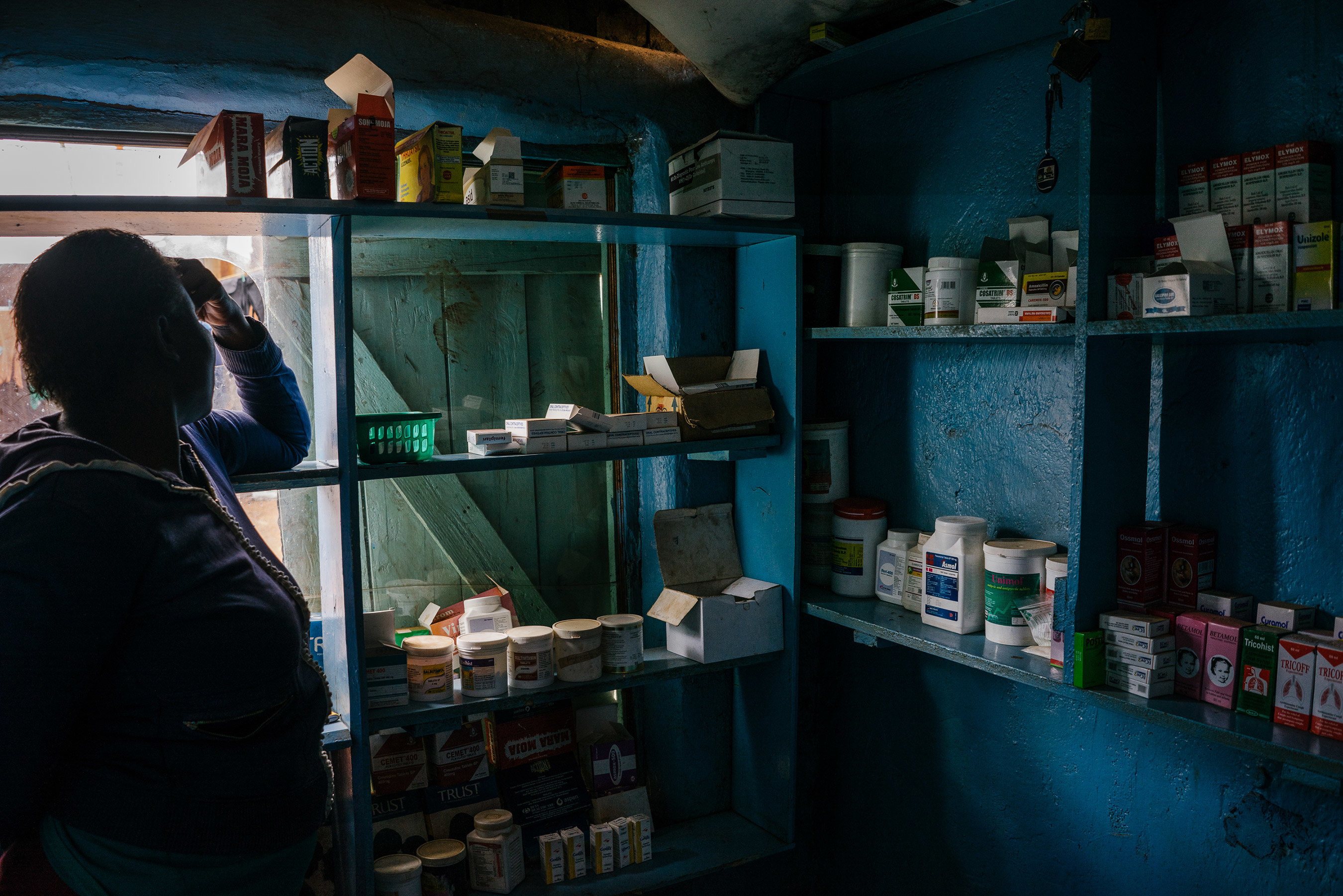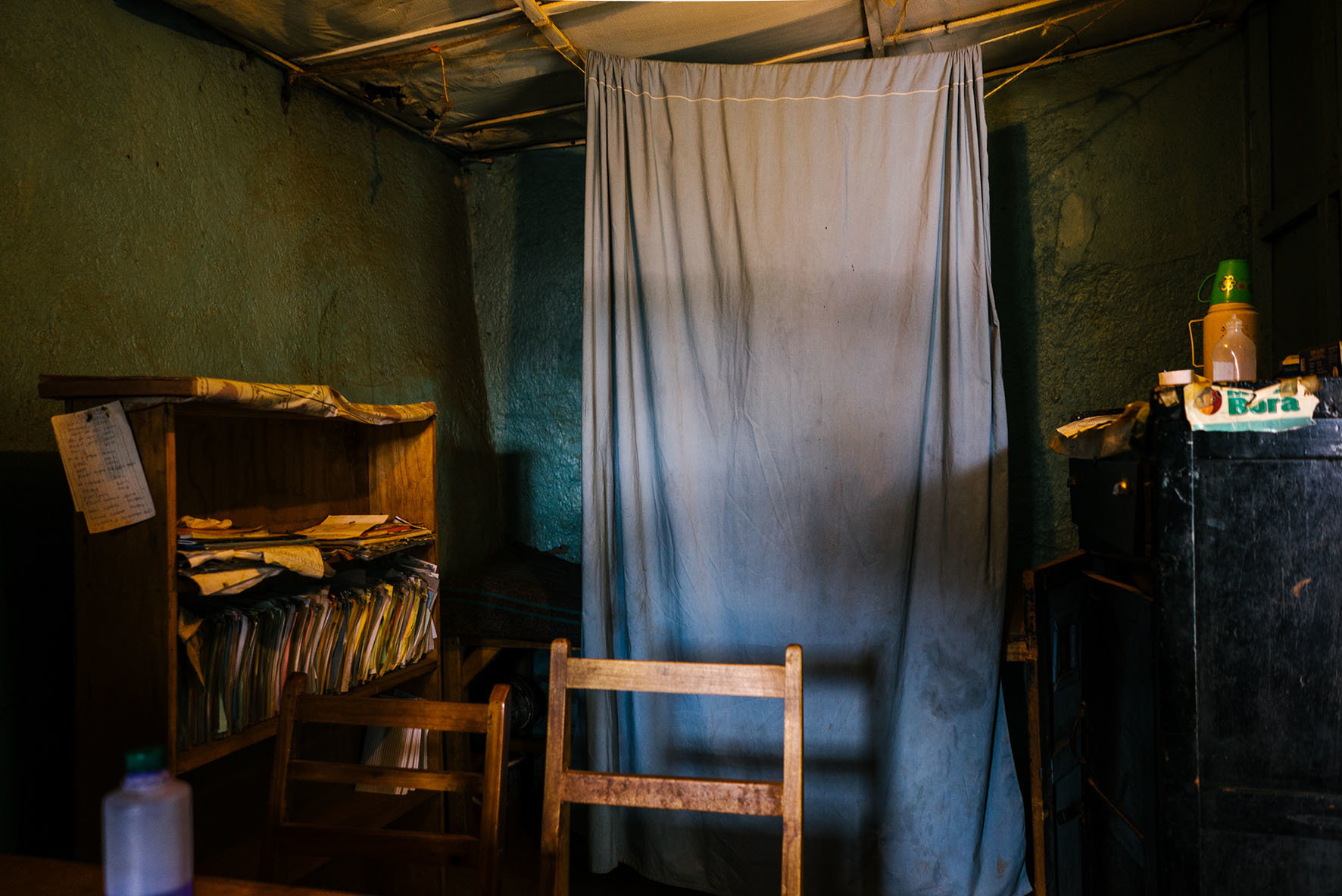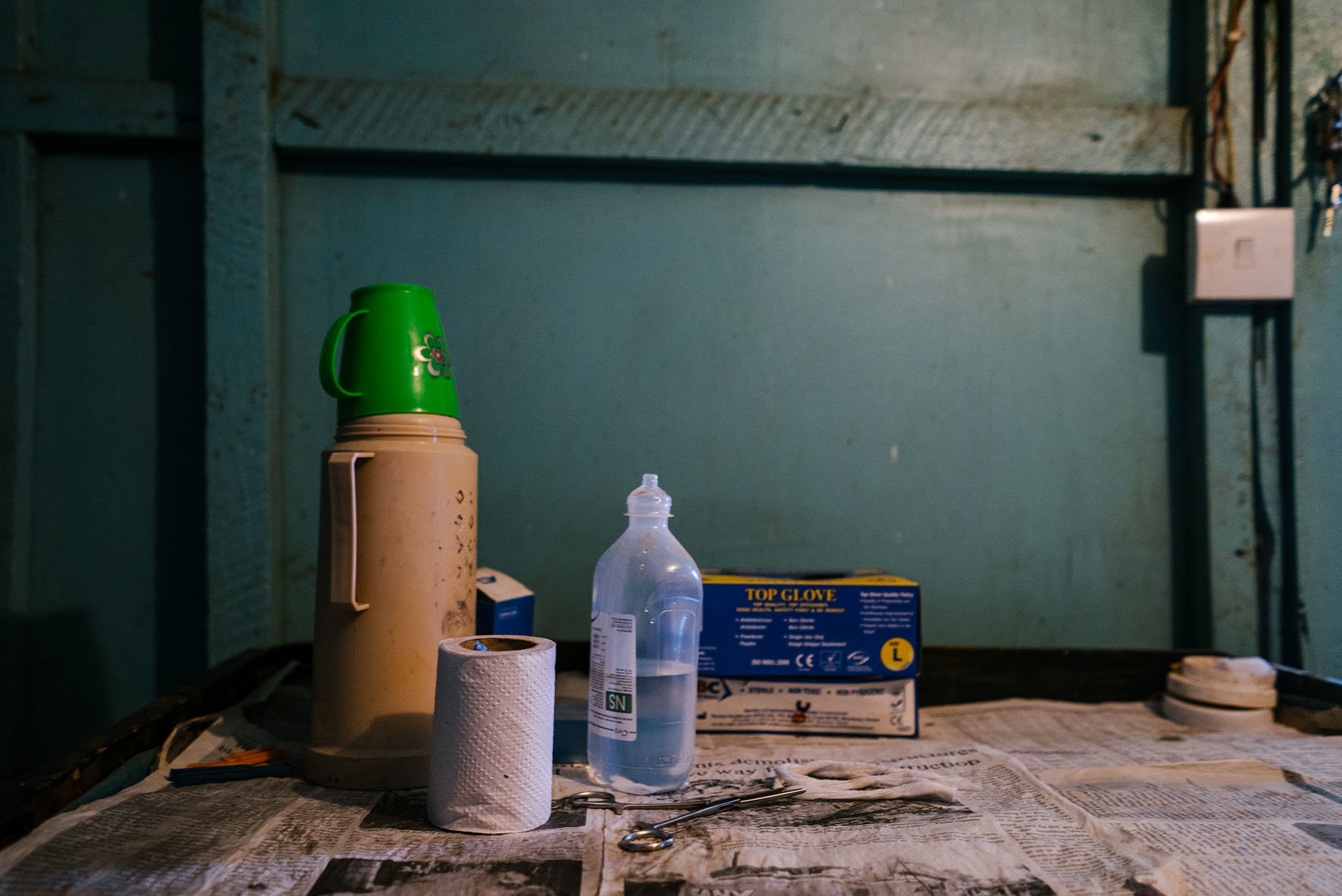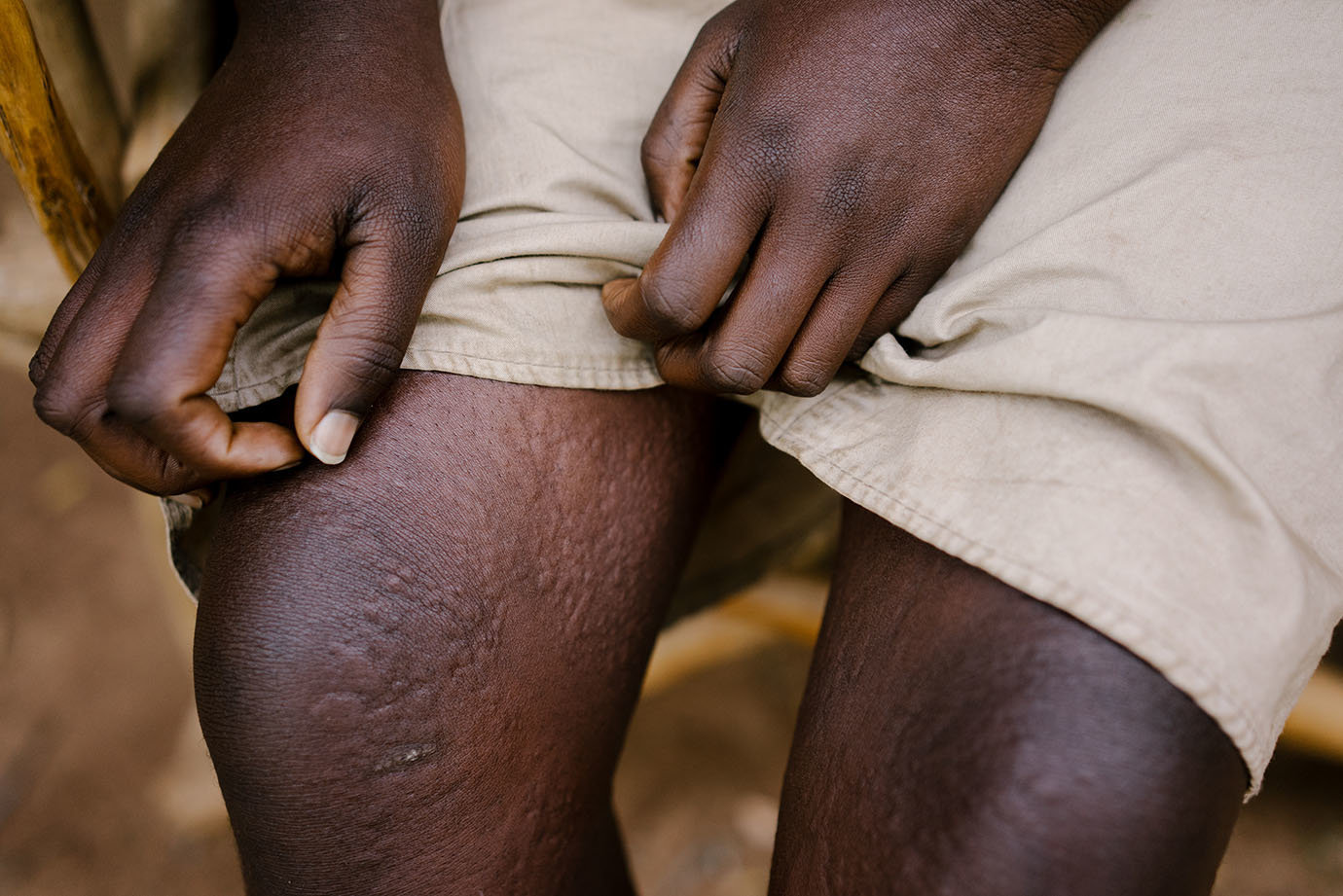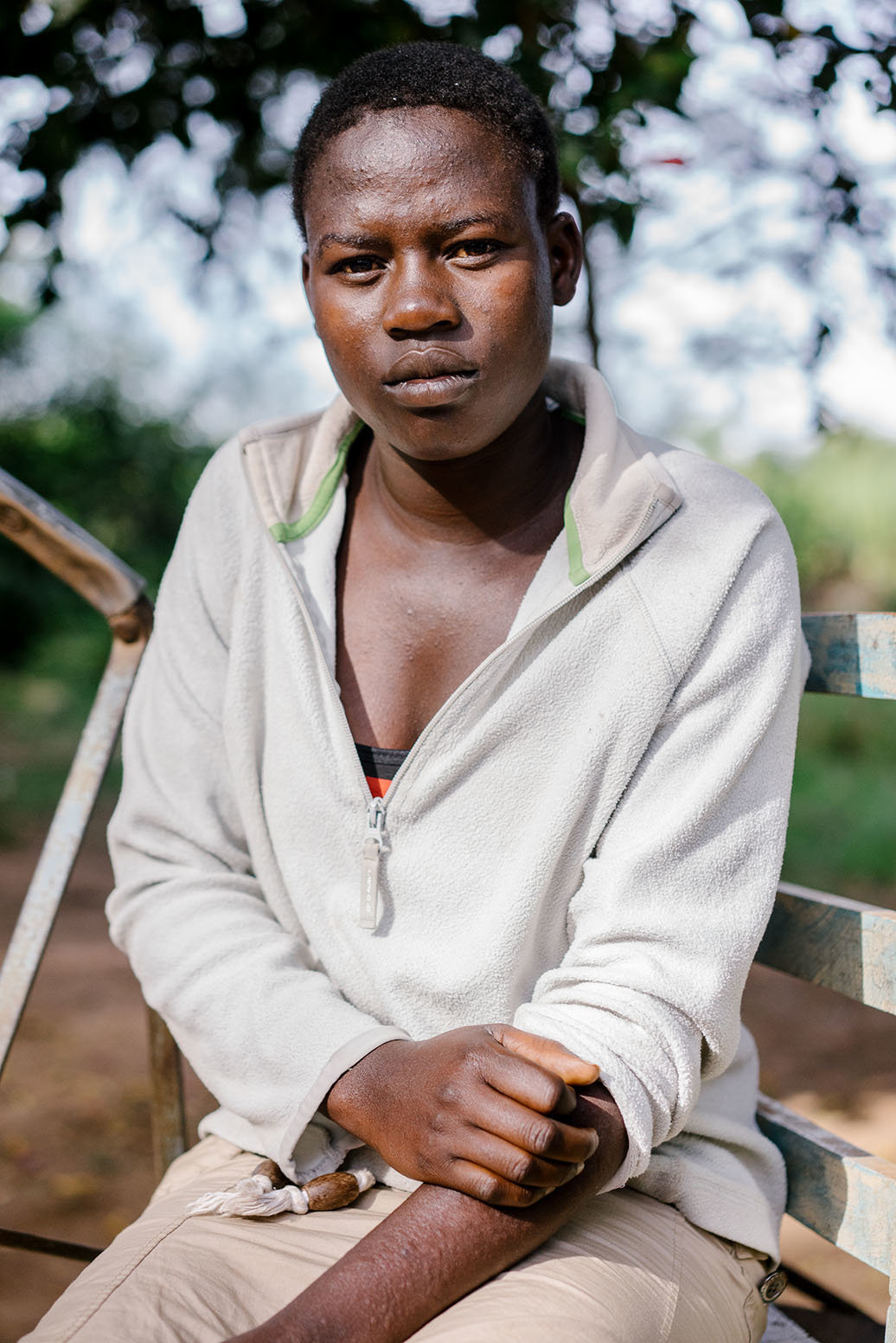When the Islamic militant group Boko Haram kidnapped nearly 300 Nigerian high school girls in a single day, the story horrified the world. Just after midnight, armed fighters pulled the girls out of their beds in the dorm at the Chibok Government Secondary School. Then they loaded them into trucks, torched the building and sped off into the trees. No one knew what had happened to the students until three weeks later, when Boko Haram’s leader released a video announcing that he planned to “sell them in the market, by Allah.” Over the following year, as activists, politicians, and celebrities from Malala Yousafzai to Michelle Obama to Kim Kardashian called attention to the girls’ plight, Boko Haram enslaved and raped hundreds more women and girls. Often, the specific goal was to impregnate them to create a new generation of fighters. Some of the girls were as young as nine years old.
Many of those who managed to survive their ordeal—being serially raped by multiple fighters, being forced to have sex every night at knifepoint—came back carrying the offspring of their abusers. In 2015, after the Nigerian Army rescued more than 700 women and girls, one humanitarian aid camp reported that more than 200 were visibly pregnant. The United Nations Population Fund, or UNFPA, the main agency providing health care to the survivors, distributed emergency reproductive health supplies like treatments for sexually transmitted infections and sanitary tools that a birth attendant might need to deliver a baby. It handed out “dignity kits” that included items like shampoo, maxi pads, and underwear. But it couldn’t offer any of the rape survivors the option to end their pregnancies. Some of the girls reportedly sought out illegal, unsafe abortions. Others were too afraid to take the risk and were shunned by their communities for giving birth to the children of killers. And an American policy was one of the main reasons why.
The policy in question is the Helms amendment, which prevents American aid from being used to pay for abortions. The domestic equivalent, the Hyde amendment, makes exceptions so that federal programs like Medicaid can be used to fund abortions for women who are the victims of rape and incest, or whose lives are in danger. But when it comes to Helms, the U.S. government does not allow any exceptions at all—not even for women who are raped in conflict or who would die without the procedure.
Because the U.S. is the single largest donor to women’s health programs, the Helms amendment drastically restricts access to safe abortion all over the world. Marie Stopes International, a family planning charity that trains aid workers to provide reproductive health and abortion services to women raped in conflict, reports that trainees who work for U.S.-funded organizations have to ask permission even to learn about safe abortion. “Some of the NGOs based in the United States, they'll come in and tell us point blank that they only want their people trained on post-abortion care, nothing to do with abortion,” says Paul Oloo, a manager at the training center. This policy applies to any entity that gets U.S. aid, from local NGOs to major global institutions like the UNFPA. In 2004, for instance, the George W. Bush administration defunded the UNFPA because it suspected the agency was providing abortions in China. President Barack Obama restored the funding in 2009, with the caveat that UNFPA would receive the money as long as it didn’t provide abortions. If the agency had helped any of the Boko Haram victims terminate their pregnancies, it would have lost about $30 million a year in U.S. aid. (The UNFPA has denied that the fear of losing U.S. funding prompted its decision not to provide abortions.)
The amendment was created in 1973 by Sen. Jesse Helms, a North Carolina Republican, as a response to Roe vs. Wade—the first of many attempts by the U.S. government to influence reproductive rights in the developing world. But it is currently the subject of growing alarm because of the spread of rape during mass social upheavals and the increasing use of rape as a weapon of war.
In the Middle East, the Islamic State has instituted a formal system of sex slavery, capturing thousands of women and young girls who are members of the Yazidi religious minority and gifting them to militants or selling them in markets. The refugee crisis in Syria and Iraq has also exposed thousands of women to sexual assault. Four women’s rights organizations recently wrote to warn the German government of a “culture of rape and violence” in the country’s overcrowded refugee shelters. “There are reports of numerous rapes, sexual assaults and increasingly of forced prostitution,” the groups wrote. “These are not isolated incidents.” Rape, says Brian Atwood, a former director of the United States Agency for International Development under President Bill Clinton, “has become almost an epidemic, because of what’s happening in Syria, what’s happening in Nigeria with Boko Haram ... There are terrorist threats by al Shabab out of Somalia, and in the northern part of Kenya it is virtually a conflict zone.”
No other major donor country places similar restrictions on abortion care for rape victims. In 2013, the United Nations passed two resolutions calling on member states to ensure that humanitarian aid for rape victims include abortion. While the Obama administration accepted “in principle” that rape victims should have access to reproductive services, it rejected the U.N.’s recommendations. This May, at a UN meeting in which members reviewed each other’s human rights records, the United Kingdom likened the U.S. policy to “torture.” “We're the only modern country that has the ability to help these young women that isn't doing it,” says Atwood.
This isn’t a situation where Congress has prevented the administration from acting. In fact, the solution is shockingly simple. The text of the Helms amendment only states that no U.S. foreign assistance money “may be used to pay for the performance of abortions as a method of family planning.” Atwood says that “most legal scholars who have looked at this issue say it’s a wildly exaggerated interpretation of that law” to apply it to cases of rape, incest or life endangerment. Obama could simply issue an executive order clarifying that the law has exceptions—the same exceptions that already exist domestically—or he could publicly direct the head of the USAID to start writing the exceptions into its contracts.
In August, 81 Democrats in Congress wrote urging Obama to take this step. A group of 28 senators followed suit in October with a strongly worded letter about women raped in conflict. “We cannot be bystanders to such gross violations of the human dignity of these women and girls,” the letter read. “If the U.S. does not work to increase access to reproductive healthcare for vulnerable populations, particularly safe abortion services, there will be negative, long-term consequences.” And in November, Hillary Clinton was asked about the issue at an Iowa town hall. She didn’t commit to revising the interpretation of Helms if she were elected president, but said, "I do think we have to take a look at this for conflict zones."
So far, though, the Obama administration has been unwilling to change the policy. Until that happens, women who are raped and become pregnant in developing countries and conflict zones are often unable to get a safe abortion. To understand what this means for a rape victim, how U.S. policy can warp an entire country’s health system and the course of a woman’s life, the best place to begin is Kenya.

The Kenyan town of Bumula is about 270 miles northwest of Nairobi, near the Ugandan border. It is a small collection of mud huts, surrounded by sprawling fields of sugarcane and maize. Although farming is the main business here, the soil quality is poor. About two thirds of residents never make it past primary school, and more than half of people live below the country’s rural poverty line of 68 cents per day.
Consolatta Wafula wasn’t like most other teenagers in Bumula. At 16, she was enrolled in Mateka Secondary School and had no intention of stopping her schooling. She had a boyfriend and a regular group of friends she’d known since childhood; she loved math and hoped to become an engineer. Her unusual aspirations were partly thanks to her father, Robert, a proud man who was determined to give all of his six children an education. Because school was expensive—Consolatta’s tuition alone cost $450 a year—Robert worked several jobs. He owned 10 cows and sold milk to his neighbors. He operated a small cafe in his front yard, where he and his wife served tea and githeri, a mixture of corn and beans, for a total of about $8 a day. And he also worked part time on the farm of Henry Nyongesa, the majority leader of the County Assembly in the provincial capital, Bungoma.
In December 2013, Consolatta was on her winter break when Nyongesa started plying her with expensive gifts and money. Because he was friends with both her father and uncle, no one questioned why a powerful middle-aged politician was regularly making visits to the Wafulas’ compound—three small mud houses with no running water or electricity. “He gave me money to buy a cell phone,” Consolatta told me through a translator. “And then he was kind of forcing me. I had to accept to have sex with him.” Over the next two months, she says, Nyongesa coerced her to have sex with him five times.
In March, Consolatta started vomiting in the mornings and noticed that her breasts were sore. When she missed her period, she knew that she was pregnant. She reluctantly told Nyongesa and, a few days later, her mother. To her parents, Nyongesa admitted that he was responsible. To Consolatta, he said that he was arranging for her to have a secret abortion, because he knew her parents would never allow it. “I was terrified,” she says. And she was right to be.
Unsafe abortions are a leading cause of maternal deaths in Kenya, which has one of the 20 highest maternal mortality rates in the world. Until 2010, the procedure was essentially illegal except to save the life of the mother. About a third of the population belongs to the Catholic Church, which has staunchly opposed any access to abortion. To end unwanted pregnancies, women would insert poisonous herbs into their vaginas, drink crushed glass or visit “quack doctors,” whose methods were little better. One woman arrived at a Marie Stopes clinic after putting an unknown chemical reactive in her vagina. Local health workers described it as a “bomb,” because it had exploded. “We couldn’t put a speculum inside her. She was screaming,” says Faustina Fynn-Nyame, the country director for Marie Stopes Kenya. “The girl will never have a normal sexual life.”
The most vulnerable were young teenage girls, who are more likely than adults to experience complications from unsafe abortions because their reproductive organs are still developing. Often, these girls were the victims of rape and incest: Nearly 1 in 3 girls in Kenya experience some kind of sexual violence by the age of 18. One nurse at a health clinic in Bungoma told me that she sees the most cases of terminations gone wrong in January and February, when schools are on their winter break. “Most people who come in are school-going kids,” she says.
In some communities, rape is ritualized. The Samburu people in the north, for instance, practice a tradition called “beading.” An older man places an intricate necklace on a young girl, often a close relative and sometimes as young as nine years old, to reserve her as his sexual property until she is married. Although the girls are frequently raped, they are not allowed to get pregnant. If they do, they are subjected to crude abortions, such as having their stomachs stomped on by village elders until they miscarry.
By the end of the decade, some 100,000 women a year were dying or landing in emergency rooms with complications from unsafe abortions—fever, sepsis and organ failure. The crisis became so urgent that Kenya’s new constitution, approved by popular vote in 2010, declared that abortion would be legal when, “in the opinion of a trained health professional, there is need for emergency treatment, or the life or health of the mother is in danger, or if permitted by any other written law.” Two years later, the Ministry of Health issued guidelines explaining the exact circumstances in which the procedure would be allowed. The “health of the mother” exception would include mental health, which doctors interpreted to cover rape and incest cases. The ministry also issued a curriculum for the training of mid-level providers, including nurses and midwives. The move suddenly and dramatically expanded access to abortion care in rural, low-income areas that lacked doctors, and nurses in these areas saw an influx of patients. Ruth Owino, a nurse at the main hospital in Bungoma, says that after the guidelines were released, women and girls started coming to the hospital and openly explaining their needs: “You just walked to outpatient and asked for the service, and then the service was provided.”
This new climate lasted only a year. In December 2013, the same month that Consolatta says she was raped for the first time, USAID sent a letter to its contractors in Kenya telling all non-profits and health care workers that received American aid that they were not allowed to attend an upcoming government meeting about maternal health, because the 2012 safe abortion guidelines would be on the agenda. The implied rationale was that U.S.-funded groups would be violating the Helms amendment if they were present while abortion was merely being discussed.
The day after the letter went out, Kenya’s Ministry of Health withdrew the guidelines and the training curriculum entirely. “It has also been brought to our attention that some sections of these documents require wider stakeholder consultation and consensus building,” the ministry wrote in a letter to health providers across Kenya. Two months later, in February, the ministry wrote a second letter instructing all health providers to halt safe abortion trainings and stop stocking the medication that doctors use to perform non-surgical abortions in the first trimester. “Abortion on demand is illegal,” the letter said, so “there is no need of training health workers on safe abortion or importation of drugs for medical abortion.”

Ever since Kenya gained independence from Great Britain in 1963, the government has struggled to provide adequate health care to its deeply poor, mostly rural population. Outside donors fund about a quarter of the country’s entire health sector. Of these, the United States is the largest single contributor, providing more than $800 million a year in grants through USAID and PEPFAR, the federal AIDS relief program founded by President George W. Bush in 2003. And so it’s hardly surprising that the USAID letter triggered a chain reaction within the Kenyan health care system. “When you have one of your biggest donors saying, ‘We don’t quite like that,’” says Fynn-Nyame, “of course you will comply.”
Under Kenyan law, abortion was still legal in the circumstances set out in the 2010 constitution. But without the government guidelines explaining exactly what those circumstances were, confusion reigned. Glimpsing an opportunity, the police started harassing and extorting those providers who continued to offer the service.
Dr. John Nyamu runs a women’s health clinic in a high-rise building in downtown Nairobi, where sirens and car horns echo through his packed waiting room all day long. Nyamu is 50 years old and has been providing reproductive health care to Kenyan women for the past decade, at significant risk to his own safety. In 2004, he was charged with 15 counts of murder and spent a year in a maximum security prison after police found some medical records from his office dumped by a river along with a pile of 15 fetuses. Nyamu was acquitted and released when a judge determined that the fetuses were actually the remains of late-term miscarriages from a local hospital, likely planted next to Nyamu’s medical records to frame him.
Nyamu talks about his year in prison with a wry smile and even chuckles at some of the more egregious details. When the police first arrested him, he says, they threatened to send him to Nairobi’s notoriously dangerous Industrial Area Remand Prison. “You will die there,” the police told him. “There is a lot of congestion, there’s a lot of tuberculosis, there’s a lot of rape.” For a small fee, the police added, they would send him to a safer prison where politicians and white-collar criminals go. “I had no other alternative, so I told them, okay, how much do you want?” Nyamu says. He paid them $100 to go to Kamiti Maximum Security Prison instead.
Nyamu continues to provide abortions because he knows that if he doesn’t, women will simply turn to other, more hazardous methods. But although he is careful to adhere to the terms of the 2010 constitution, he is still regularly harassed by the police. In early September, he says, a woman visited his office and asked for an abortion. He told her he was going to perform an exam to confirm that she was pregnant. At that point, the woman texted the police from his exam room, and four men walked in to arrest him. “They said, ‘We are going to charge you with attempting to perform an abortion,’” Nyamu says. When he arrived at the police station, he says the police demanded 2,000 shillings, or about $20, in exchange for dropping the charges.
A nurse at the health clinic in Bungoma, who requested anonymity to protect her job, says local police recently tried to bring her in for questioning after she provided a medication abortion to a 13-year-old girl. A man had brought the girl into the hospital, claiming to be her uncle, and explained that his son, the girl’s cousin, had impregnated her. Because it appeared to be a case of incest, the nurse says she “trusted the man and assisted the girl.” A week later, the nurse received a phone call from the police informing her that the abortion was illegal and that she needed to report to the station. She sought advice from Ipas, an international organization that had trained her, and they told her not to talk to the police without the assistance of their legal counsel. She was never arrested, but is now paranoid about providing abortions.
Since most providers in Kenya do not have the means or the desire to repeatedly pay off police officers, they have stopped providing abortions altogether. Owino, the Bungoma Hospital nurse, says she started turning women away after the government revoked the guidelines. “I tell them it is illegal,” she says. “When the policy guideline is not there, you are not safe. Anything can happen.”
Others perform abortions only in secret and lie about it in their records. Since “post-abortion care” is legal even at U.S.-funded facilities, providers will often indicate that a woman came in already bleeding from a previous attempt. I spoke to three nurses in the Bungoma area who had been trained to provide abortions in 2012. When I asked if they still offered the service, they replied carefully that “abortion is illegal in Kenya.” But when I asked what they would do if a pregnant woman or girl came to them in desperate circumstances, they told me they would “help her”—as long as she could keep a secret. “Even our bosses here keep telling us, ‘Do it, but at your own risk,’” said one nurse. “Lately I’ve been doing it, but you try your best not to leave any evidence behind.”
The nurses said that they continued to perform abortions because often the women who come to them are in such dire need. “A mother will bring her daughter to you, and she doesn’t have the money, and she’s crying, literally saying, ‘If I go back with her, my husband is going to kill me.’ Or this girl who is telling you, ‘If you don’t do it, I will commit suicide.’ What do you do?” says one nurse, who had just returned to her office after treating the vaginal injuries of a 10-year-old incest victim. “If I don’t assist them, they go to the quacks, and she’ll end up a corpse.”
The “quacks” are often lower-level health care workers—like lab assistants, pharmacists or traditional birth attendants—who offer cheap, under-the-table terminations. They commonly use either sticks or metal tools fashioned by blacksmiths to reach into a woman’s uterus and manually scrape out or puncture the fetus. Often, however, the quack will actually puncture the uterus itself, causing potentially fatal injuries. Locals in Kibera, a slum in Nairobi, call them “50/50s,” because when a girl goes in, she has an equal chance of dying as she does of coming out alive.
As of 2014, 525 pregnant women died for every 100,000 live births in Kenya, compared to 356 in neighboring Uganda. (The average maternal mortality rate in developed countries is 12 per 100,000 births.) The Center for Reproductive Rights, an international legal advocacy group, is currently suing the Kenyan government on behalf of a 15-year-old rape victim who went to an illegal provider and developed an infection that escalated into kidney failure. She will require an organ transplant as soon as her family is able to raise the money.

Henry Nyongesa arranged for Consolatta to be brought to a storefront in the middle of Bungoma with an awning that reads “Joe Medical Clinic.” The doctor there, Joe Albert Owola, has been charged at least four different times with murder or unsafe abortion after young girls died or experienced severe complications from abortions at his clinic. When Consolatta arrived, she says Owola and Nyongesa talked on the phone and agreed on a price. Owola gave her a white pill to place under her tongue for 30 minutes and told her she was going to experience stomach pains. When the pill had no effect, Owola reached between her legs and put what Consolatta describes as a “crooked weapon” inside her. She says she felt excruciating pain and started bleeding heavily, but Owola only scolded her for crying. “Was I the one who sent you to sleep with that man?” she says he demanded.
Consolatta bled on the bed in the clinic for about an hour until the fetus was expelled, and then the doctor sent her home on a motorbike. “I was still bleeding,” she says. “My back was aching, and I could not sit down. My stomach was paining. There was pus running out of me.” By the time she got back, she had developed sepsis, a life-threatening response to an infection. Her father rushed her to a local Marie Stopes clinic and sold six of his 10 cows to pay the $200 bill. “I knew she was going to die,” he says. “It was not a sacrifice, because she is my daughter.” Consolatta survived, but she developed an itchy rash all over her body that baffled local nurses. Blood and pus leaked from her vagina for months.
Then, in June 2014, two police officers showed up at her grandmother’s house to arrest Consolatta. “I was only informed that the government knew I had an unsafe abortion,” she says. She spent two nights in jail before a local advocacy group helped her father pay for her $150 bail and continuing medical treatments. The group also filed criminal lawsuits against Nyongesa and Owola on her behalf. (Both men deny helping Consolatta have an unsafe abortion and are awaiting their court dates. Neither could be reached for interviews, and the Bungoma County Assembly did not respond to a request for comment.) Since then, Consolatta’s father had to sell a seventh cow to pay his portion of her bail. With only three cows left, he can barely sell enough milk to support his family, and three out of six of his children have had to stop attending school. “I’m very angry,” he says. “Because when you don’t educate your child, there’s no life at all.”
These days, Consolatta spends most of her days picking vegetables and helping her mother around the house. “Sometimes,” a neighbor told me, “we’ll find her somewhere, resting alone. Sometimes she faints.” When I met her, she barely raised her head, staring at the sparkly letters that read “One Love” on her tank top and dragging her fingernails over the itchy bumps that covered her arms. She answered my questions in as few words as possible, shrinking into her chair as if she were trying to vanish. The only subject that caused her to brighten was when she explained how she was reading on her own at home, to make up for the classes she was missing. Her favorite book is “When the Sun Goes Down,” a collection of short stories that illustrate different challenges facing Africa, like HIV/AIDS and political corruption.
Owola, meanwhile, continues to provide abortions. In August 2014, several months after Consolatta visited him, a 16-year-old died from an abortion in his clinic. A local news report showed three men carrying out the girl’s body on a blanket, as an angry mob threatened to burn the clinic down. Armed police escorted Owola to safety. He was charged with murder, but released on a $2,000 bond.

When Obama visited Kenya in July 2015, the country where his father was born and where he is widely idolized, reproductive rights advocates hoped that he would use the historic occasion to finally announce that he would allow exceptions to the Helms amendment. “If Obama came here and he came out and said women should be able to access safe abortion, oh my God,” says Fynn-Nyame, of Marie Stopes. “That's a game changer.” In the weeks before the trip, Serra Sippel, the president of the Center for Health and Gender Equity in Washington DC, met with senior officials at the White House “many” times. She flew rape survivors in from Kenya and South Africa to tell their stories to the president’s most trusted advisers. She brought the issue to some of the most influential women in the administration—senior adviser Valerie Jarrett, USAID administrator Gayle Smith and Melissa Rogers, head of the White House Office of Faith-Based Partnerships. She personally handed a sample executive order to the Special Assistant to the President, Tina Tchen. But the White House didn’t budge.
Sippel says that when she met with the Obama administration to discuss the Helms amendment, staffers introduced new obstacles. They wanted more personal stories, more data on the women who would be affected by the policy change, more supporters from outside family planning organizations. “Everything they've asked to have, which I assume they're asking for political cover, we've given them,” she says. In June, she brought the administration letters signed by 69 CEOs of human rights organizations and 31 faith-based leaders. It wasn’t enough. “I've been doing reproductive rights advocacy now for more than 15 years, and I have never ever experienced anything like this,” says Sippel.
The White House declined to comment, while Benjamin Edwards, a USAID spokesperson, said the agency takes the issue “extremely seriously.” He added, “USAID is working every day to improve the health and safety of women and girls around the globe, including survivors of sexual violence.”
In one way, the source of the administration’s reluctance is obvious: Even though the White House doesn’t need congressional approval to clarify the Helms amendment, Republicans could slash USAID funding for international family planning providers in retaliation. Conservatives in Congress have already indicated that they would fight any effort by the administration to relax its interpretation of Helms. Sen. Marco Rubio, a 2016 presidential candidate who opposes abortion even in cases of rape and incest, stalled Smith’s confirmation to the USAID in July because she was noncommittal about the Helms amendment on a questionnaire. Other likely opponents include GOP Reps. Chris Smith, Darrell Issa and Ileana Ros-Lehtinen, who attacked the Obama administration in 2010 for supporting Kenya’s constitution because of its abortion provision. Smith even flew to Kenya the next year to lobby against abortion rights in person. “My belief is that we need to protect life to the greatest extent possible,” he says, when asked whether women raped in conflict should be able to get abortions. “Abortion methods are violence against children—dismemberment, chemical poisoning. The Africans get that.”
The administration may also be wary of antagonizing Catholic organizations, which receive massive federal grants to administer humanitarian aid. In 2014, USAID gave more than $200 million to Catholic Relief Services. Allowing exceptions to Helms would not force contractors to provide abortions. But it could jeopardize grants to organizations that are unwilling to provide the full range of health services permitted under U.S. law.
Still, Obama has previously supported abortion rights in the face of fierce political opposition. One of his first moves after being elected in 2008 was to repeal the “global gag rule,” a ban on granting federal funds to international family planning organizations that offer information about abortion. In 2015, Obama said that abortion rights are a “fundamental American value.” And in his second term, he has been willing to wield his executive authority aggressively on other issues, from rejecting the Keystone XL pipeline to raising the minimum wage for federal contractors. “It’s just sad and tragic and maddening” that he hasn't taken action on Helms, Sippel says. “This administration can do it, and they’re not doing it. We don’t know what they’re thinking.”
During Obama’s Kenya visit, he made a special point of drawing attention to the rights of women. “I'm going to spend a little time on this,” he told a packed stadium in Nairobi. He condemned the practices of genital mutilation and child marriage. He talked about how important it was for girls to be sent to school. And he declared that domestic violence and rape as a weapon of war must stop. “Treating women and girls as second-class citizens, those are bad traditions,” he said. “They need to change. They’re holding you back.” He was right—but he was leaving out his own power to help them.

